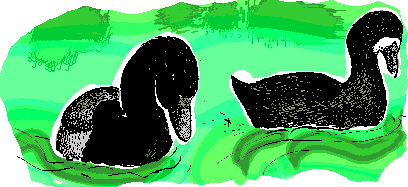Adapted from Jim Conrad's online book A Birding Trip through Mexico, This excerpt from "Laguna Catemaco" in southern coastal Veracruz state
LESSER SCAUPS

I'm surprised to find so few ducks here -- just a few Lesser Scaups. My field guide's distribution maps indicated that several species are to be expected here. Maybe other species arrived but saw all the coots and just kept going.
One reason I've been wanting to see ducks is that before my trip I was reading Paul A. Johnsgard's Handbook of Waterfowl Behavior. Therefore, now the Lesser Scaup before me throws back its head in a curious way and I recall that Johnsgard dignifies this blur of action with the name of "head-throw display." He says that it lasts approximately 1/20th to 1/30th of a second, and that the bill is thrown back less than 45 degrees, even though it appears to reach almost the vertical. Head-throws are displayed by males to focus the female's attention and convey the message that he's interested in her. Since it's such a brief event it's always preceded by special "head shakes" conveying the message "Pay attention, now, for I'm about to head-throw... "
Head-throws very similar to the Lesser Scaup's and with the same message attached also appear among Greater Scaups, Canvasbacks, Redheads, and Ring-necked Ducks -- all species so closely related to our Lesser Scaup that on occasion they hybridize with them in the wild. Johnsgard makes the point that head-throws in Greater Scaups are slower than in Lesser Scaups -- about 1/6th of a second instead of the Lesser Scaup's 1/20th to 1/30th of a second.